GwinnettForum | Number 21.50 | July 15, 2022
PILGRIMS IN IRELAND: This group of 10 students and two chaperones from the Norcross Episcopal Church visited in Ireland recently, staying at a country house in County Kilkenny, and soaking up the stories, the culture and the greenery. For more about this journey, see Another View below.
TODAY’S FOCUS: Utah program gets unemployed folks back to work quickly
EEB PERSPECTIVE: President says 85% of UGA students are residents of Georgia
ANOTHER VIEW: Dozen people enjoy church “Pilgrimage” to Ireland
SPOTLIGHT: Comet National Shipping
FEEDBACK: His concern is possible tyrannical right theocracy
UPCOMING: Peachtree Corners invests $2 million in new playground equipment
NOTABLE: Lawrenceville plans slip lane for direct hospital access
GEORGIA TIDBIT: Chestnut trees, once prevalent, were victim of blight fungus
MYSTERY PHOTO: Another lighthouse, but it’s a short one!
Utah program gets unemployed folks back to work quickly
By Buzz Brockway
Vice president of policy, Georgia Center for Opportunity
PEACHTREE CORNERS | Last month I joined two of my colleagues on a trip to Washington, D.C. Our purpose was to meet with Congressman Rick Allen (Ga.-12) and Congressman Burgess Owens (Utah-4) to discuss integrating workforce development programs with safety net delivery. The reception we received was most supportive of this idea. We hope to eventually see federal legislation to allow states to do this.
A 2020 report by Mason Bishop of the American Enterprise Institute details how the state of Utah has integrated the delivery of their workforce development programs with the delivery of their safety net programs. Utah has created “one stop” centers across the state under their Department of Workforce Services. These centers allow citizens to obtain all the workforce and safety net services they need. More importantly, a plan is developed that allows the citizens to get on a path toward self-sufficiency and flourishing.
Unfortunately, under current federal law, Utah is the only state allowed to integrate the delivery of these programs. Changing federal law to allow states like Georgia to follow Utah’s successful lead, is what prompted our visit to Washington.
In 2021 we at the Georgia Center for Opportunity studied how job markets have recovered in the wake of the COVID19 pandemic. This study showed that Utah’s job market recovered faster than any other state in the nation. Getting people back to work quickly, is exactly what the Utah Department of Workforce Services was designed to do.
Currently Georgia, like many other states, people in need of safety net services must visit several offices, sometimes in different parts of the city or county, to obtain the help they need. Additionally, because the delivery of these programs is not integrated with workforce services, people may never know about the education and training opportunities available to them. We believe this status quo is unacceptable and are working with state and federal officials to fix this broken system.
Work must be treated as more than a paycheck. Work brings dignity and purpose to an individual which produces a ripple effect throughout their lives. It provides purpose, stability to families, and helps maintain strong mental health for an individual. Regaining employment can improve a sense of life satisfaction, mental outlook, and mental health. For those who lost jobs due to sickness or disability, reengaging in the workforce is therapeutic, promotes recovery and rehabilitation, minimizes mental and physical health, and overall provides a better quality of life.
Georgia has begun consolidating workforce programs under one roof. We applaud this move. However, to maximize the benefit to our citizens, consolidating the delivery of our safety net programs must also happen, and then workforce services must be at the center of everything we do to help our citizens in need.
- Have a comment? Send to: elliott@brack.net
UGA president says 85% of students are Ga. residents
By Elliott Brack
Editor and Publisher, GwinnettForum
JULY 15, 2022 | The 22nd president of the University of Georgia, Jere Morehead, addressed the Gwinnett Rotary Club recently, relaying what’s going on at the state’s land grant college. This was his third visit to the Gwinnett Rotary Club since becoming president.
![]() Morehead has served as president for the past 10 years and proudly proclaimed that winning a National Football Championship has brought together two common themes on campus. “We are now a powerhouse in academics as well as a powerhouse in athletics.”
Morehead has served as president for the past 10 years and proudly proclaimed that winning a National Football Championship has brought together two common themes on campus. “We are now a powerhouse in academics as well as a powerhouse in athletics.”
He is also the Southeastern Conference representative to the NCAA Board of Governors, and chairs that board. It is with wrestling with how to meet the needs of student-athletes.
President Morehead told Rotarians that for the first time, the university has now passed enrolling 40,000 students, with a record 6,200 incoming freshmen students. “We had not expected that many to be in the freshman class, and so we are scurrying to find housing for that many new students.”
Among his comments:
- That with the university’s trajectory of growth, the average SAT scores has risen to 1391 and the average ACT score is 32. “Very few institutions have students with such high scores.”
- The University of Georgia is focused on interactive learning. It has launched programs to get students engaged, and is doing so through 150 pathways to earn a bachelor’s and master’s degree simultaneously. “We’re proud of an innovation district on campus that features hubs for research. We’re also partnering with Delta Air Lines to create the Delta Hub and offering hubs for agriculture and engineering innovation.”
- The president seemed particularly proud that “More than two-thirds of UGA graduates stay right here in Georgia to work—making a significant, positive impact on the economic prosperity and quality of life in our state. The contributions that our graduates make are among the many factors in UGA’s economic impact on Georgia, which is now estimated at $7.4 billion annually, an all-time high.”
President Morehead told Rotarians something that we had not heard before: that only 15 percent of its first-year student come from outside Georgia, and that this 15 percent represent 43 different states. Morehead feels this means that its senior state’s publicly-funded university is particularly emphasizing the education of its own people.
And then President Morehead compared UGA to another Southern school: the University of Alabama, where 57.9 percent of its students are from elsewhere in the United States. That means that Alabama ranks first among major Southern schools in educating students from out of state.
That sent us researching how other state-supported Southern universities do in this area. Here is what we found out:
University percentage of out-of-state students
- Georgia 15%
- Georgia Tech 30%
- Alabama 58%
- Florida and FSU 12%
- South Carolina 43%
- Clemson 35%
- North Carolina 18%
- Virginia 31%
- Auburn 40%
- Ole Miss 57%
- LSU 26%
- Kentucky 38%
- Arkansas 38%
 Note that Alabama and Auburn are the highest in educating out-of-state students, and Florida schools are the lowest in these rankings.
Note that Alabama and Auburn are the highest in educating out-of-state students, and Florida schools are the lowest in these rankings.
In South Carolina, the legislature sets the tuition for their university students who live in that state. However, the university can set the cost of tuition for out-of-state students. This allows South Carolina universities to get a substantial portion of its budget from higher tuition for out-of-state students.
These rankings show essentially that local taxpayers are primarily educating their own sons and daughters at the University of Georgia, with Georgia not educating a high percent of students from other states.
- Have a comment? Send to: elliott@brack.net
Dozen people enjoy church “pilgrimage” to Ireland
By Karen Bass
Director of formation, Christ Church Episcopal
NORCROSS, Ga. | “Pilgrimage” takes on a variety of meanings for folks, but in general it involves a journey far from home and seeking spiritual insight. The youth of Christ Church Episcopal in Norcross have taken several such journeys, primarily to sites of ancient Celtic Christianity in England, Scotland, and Ireland.
The students on the trip included Morgan Rich, Peachtree Corners; Allen Valazquez, Lilburn; and the following from Norcross: Kat, Mario, Jenn and Yana Franco, Vanessa and Christian Falcon, Fawn Johnson, and Yami Silva. Chaperones were Geoffrey Wilson of Norcross and Karen Bass of Decatur.
The youth began planning their most recent trip in September of 2019, anticipating going in June of 2020. Those plans went sideways and became their own sort of pilgrimage as we slogged through a pandemic and postponed it for two years. However, we persevered and 12 people, 10 students and two chaperones, left Atlanta via direct flight to Dublin, Ireland on June 8, 2022.
The lodgings for the week was a 300-year-old converted Ferry House in The Rower, County Kilkenny. That was also the home of our wonderful guide, John Spencer. He regaled us with stories, Irish history, Celtic lore, and encouraged us to look for “Thin Spaces.” A new concept to our students, the idea of “Thin Spaces” originates from a Celtic tradition of giving meaning to the moments in life where heaven feels close to you. Because of John’s lilting Irish brogue, our students spent a bit of time searching for “ten” spaces and “tin” spaces before I had a chance to make sure they knew he had said “Thin.”
The trip was full Thin Spaces, but here are some highlights:
Glendalough, meaning “valley of two lakes,” home to a renowned early medieval monastic settlement founded in the 6th century by St. Kevin. The Irish Annals contain accounts that it once included workshops, areas for manuscript writing and copying, guest houses, an infirmary, farm buildings and dwellings for both the monks and a large lay population. The site was probably “…only from the 10th century.”
St. Mullins, a village named after Saint Moling (or Mo Ling, 614–697), who founded a monastery in the early 7th century. It is said that St. Moling dug a mile-long watercourse with his own hands to power his mill, a task that took seven years. The St. Moling watercourse is still there, but the original monastery was plundered by Vikings in 951 and was again burnt in 1138.
Graiguenamanagh, meaning “hamlet of the monks”, a village on the River Barrow in County Kilkenny, home to Duiske Abbey, the first, largest, and perhaps finest of the Medieval Cistercian monasteries in Ireland.
Comeragh Mountains, home to the glorious Coumshingaun Lake Walk (Hike!), a mountain top lake with glorious, rugged beauty and many Blackface Mountain Sheep (think squirrels in a park.) Forming a natural amphitheater, the pear-shaped Coumshingaun Lake is flanked on three sides by rocky cliffs that rise straight up into the sky.
The Saltee Islands, a sea bird haven for gannets, gulls, and everyone’s favorite, puffins.
The group also visited a lot more “old” places, spent a lot of time in the vast greenness that is the Irish countryside, and visited two cities – Waterford and Kilkenny. Each of us had our own experience of “Thin Space”—-a trip of a lifetime. The group is all grateful for the church family at Christ Church Episcopal for making this trip possible. May God be with you.
- Have a comment? Send to: elliott@brack.net
Comet National Shipping
 The public spiritedness of our sponsors allows us to bring GwinnettForum.com to you at no cost to readers. Today’s sponsor is Comet National Shipping. If you have trucking needs, why pay for a WHOLE flatbed or covered truck, when all you need is half the space? Comet National Shipping of Lilburn can provide you with the transportation, packing, and warehousing solutions that will keep your costs reasonable and suited to your company’s needs. With more than 26 years of nationwide service, our customers put their trust in Comet National because we understand their shipping needs can change from shipment to shipment. In business since 1992, Comet is dedicated to delivering cost-effective solutions for transporting your products quickly and safely to your customer’s destination without compromise. At Comet National, our full-service shipping, packing, and warehousing resources are sure to fulfill your requirements. Call us at 1-800-831-5376. We will respond quickly to provide you with quotes and see to it that the loads are handled as you have specified, and delivered on time!
The public spiritedness of our sponsors allows us to bring GwinnettForum.com to you at no cost to readers. Today’s sponsor is Comet National Shipping. If you have trucking needs, why pay for a WHOLE flatbed or covered truck, when all you need is half the space? Comet National Shipping of Lilburn can provide you with the transportation, packing, and warehousing solutions that will keep your costs reasonable and suited to your company’s needs. With more than 26 years of nationwide service, our customers put their trust in Comet National because we understand their shipping needs can change from shipment to shipment. In business since 1992, Comet is dedicated to delivering cost-effective solutions for transporting your products quickly and safely to your customer’s destination without compromise. At Comet National, our full-service shipping, packing, and warehousing resources are sure to fulfill your requirements. Call us at 1-800-831-5376. We will respond quickly to provide you with quotes and see to it that the loads are handled as you have specified, and delivered on time!
- For a list of other sponsors of this forum, click here.
His concern is possible tyrannical right theocracy
Editor, the Forum:
![]() In the closing 30-45 minutes of one of the January 6 committee, it was said by two witnesses that they feared what would come with the next election. Specifically, they were talking about how close we came to a tyrant continuing his reign.
In the closing 30-45 minutes of one of the January 6 committee, it was said by two witnesses that they feared what would come with the next election. Specifically, they were talking about how close we came to a tyrant continuing his reign.
I know that the waters will be rough through the next election and maybe a bit farther, but my fear is different (and I do have a fear). It is that the radical religious right will attempt to turn this country into their domain and form a tyrannical theocracy. Recent rulings by the Supreme Court have given the radical religious right a motivation that they have not had before.
As I have said in the past, many times, for the last 50+ years I have studied all of the religions of the Norther Hemisphere. I have studied the various movements that have evolved including several attempts at a theocracy. They might work in some small countries, but they will not work here. Every one of them that has come into existence in Northern Europe has failed in short order.
– Raleigh Perry, Buford
You can influence school funding by attending meetings
Editor, the Forum:
Regarding Brian Gilbert’s comment on public funding of private schools, where “parents want to have influence and choices.” In most districts, there is no greater way to influence school direction than to regularly attend Parent-Teacher Organization and school board meetings.
Equally important is attending your municipality’s zoning board meetings. Nothing affects school funding, school programs, and teacher/student ratios than overbuilding high density housing, since this dilutes the funding. Apartment buildings have just as many school age children per household as single-family-home subdivisions, but apartments pay maybe one quarter of the school tax (when factored out).
We need apartments, but maintaining them to under 30 percent total is critical to funding quality schools. And it is the quality of education that interests parents in private schools. The highest concentration of private schools are in areas where multifamily housing is 40 percent or more of total housing. So, participation and zoning balance are critical to good schools.
– Joe Briggs, Suwanee
Upset over landlord deciding to charge for parking
Editor, the Forum:
My husband and I wanted to go and have a nice dinner to celebrate my birthday by going to our favorite restaurant in downtown Lawrenceville. There wasn’t any parking available in front of the restaurant. We decided to park behind the restaurant where parking was free. Well, not anymore.
When we went to park there were signs at a few of the spaces saying you have to text to this number to find out how much to pay for parking. I had my cell phone and tried texting, but kept getting an invalid message. There was no attendant to help us so we left, since we didn’t want to get a parking ticket or have our car “booted.”
I wrote to several of the businesses how disappointed I was that to have a convenient place to park, it will cost me. The answer I got from them also said they weren’t happy, and that their landlord did this.
Paid parking makes no sense. The landlord scores double, getting restaurant rent, and patron parking! There is other free parking, but you have to walk two blocks. It’s hard on someone who may have difficulty walking that distance. What happened to the trolley cars that were suppose to run around the downtown area?
– Sara Rawlins, Lawrenceville
Send us your thoughts: We encourage you to send us your letters and thoughts on issues raised in GwinnettForum. Please limit comments to 300 words, and include your hometown. The views of letters are the opinion of the contributor. We reserve the right to edit for clarity and length. Send feedback and letters to: elliott@brack.net.
Town invests $2 million in new playground equipment
A back-to-school event and grand opening of a new $2 million, 24,000 square foot Town Center playground is being planned for Peachtree Corners. It will begin at 10 a.m. On August 1 on the Town Green at 5140 Town Center Boulevard.
As the city celebrates its 10-year anniversary, the event will begin with a ribbon-cutting of custom play equipment that provides opportunities for parallel play activities on and above the ground. The playground features a new shade structure and has been constructed with several ADA transfer points allowing for easy access to elevated activities.
Peachtree Corners government has several activities planned that will include:
- Ice Cream Truck
- Bubbles with the Bubble Lady
- Face painting
- Balloon animals
- Bubble machines
Invite friends and family who have children to come and enjoy the new play space.
Playground equipment includes:
- We-Go-Swing promotes social interaction for an inclusive experience by encouraging multiple users to work together to swing. It opens a whole new world of playground fun.
- RollerSlide: The hillside embankment RollerSlide brings a sensory experience to the playground and inclusive sliding activity to kids of all abilities, and can be used by multiple kids, side-by-side, at one time.
- Lounge Spinner: These 36” diameter lounge spinners provide a comfortable seat for relaxing, spinning as well as self-regulation and provides a sheltered space for decompression or regulation. The semi-enclosed seat is comfortable for a parent and child to share and enjoy the activity together.
- PTC Tower: It has been designed to mimic the PTC pedestrian bridge that crosses Peachtree Parkway. The equipment features two slides, a climbing structure, stairs, two towers, and the bridge between the two towers that have the replica lettering and leaf pattern from the 141 bridge.
- The Quantis Netplay Systems concepts are taking net structures and choose endless routes of imaginative play. Quantis features a figure-eight shape for unscripted, infinite play!
- Unitary Poured in Place Rubber allows for easy access for anyone using wheelchairs or walkers. Aliphatic urethane bonds material together to provide a vibrant and durable surface that will stand up to the demands of weather.
Lawrenceville plans slip lane for direct hospital access
The City of Lawrenceville will work with the Georgia Department of Transportation and Northside Hospital Gwinnett to add a slip ramp at Georgia Highways 316 and 120. The project will add a separate exit lane (slip ramp) from eastbound Highway 316 at Highway 120 providing direct access to the Northside Hospital Gwinnett complex, without motorists having to drive onto Highway 120.
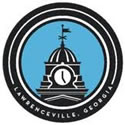 Chuck Warbington, city manager, says: “Considering overall traffic flow for the city and preventing additional congestion on Pike Street, adding a separate exit lane directly to the hospital is the best option.”
Chuck Warbington, city manager, says: “Considering overall traffic flow for the city and preventing additional congestion on Pike Street, adding a separate exit lane directly to the hospital is the best option.”
To complete the project, the City of Lawrenceville will work with CHA Consulting, Inc. as the designer, Ohmshive Construction, LLC as the contractor, and Atlas as the construction manager. The total project cost is $2,067,737 and will include 0.41 miles of grading, curb and gutter, sidewalk, drainage, and asphalt paving. It is expected to begin this month and finish in late spring 2023.
- Have a comment? Send to: elliott@brack.net
An invitation: what books, restaurants, movies or web sites have you enjoyed recently? Send us your recent selection, along with a short paragraph (150 words) as to why you liked this, plus what you plan to visit or read next. Send to: elliott@brack.net
Chestnut trees, once prevalent, were victim of blight fungus
Until the beginning of the 20th century, the American chestnut (Castanea dentata ) was one of the most prevalent and valuable trees in the eastern forests of the United States. The chestnut blight fungus (Cryphonectria parasitica), accidentally introduced around 1900, killed most of the mature trees in the natural range of the species, and today the species exists mainly as an understory shrub. Efforts currently underway in Georgia and other states, however, may eventually result in the restoration of American chestnut to eastern forests.
 Before 1900 American chestnut was said to have composed up to one-quarter of the standing trees of the Appalachian forest, including the north Georgia mountains, and in Georgia its range also extended into the upper Piedmont. The trees were especially dominant on higher mountain ridges and flats. They grew very rapidly to heights of up to 100 feet, with trunks more than 6 feet in diameter.
Before 1900 American chestnut was said to have composed up to one-quarter of the standing trees of the Appalachian forest, including the north Georgia mountains, and in Georgia its range also extended into the upper Piedmont. The trees were especially dominant on higher mountain ridges and flats. They grew very rapidly to heights of up to 100 feet, with trunks more than 6 feet in diameter.
Chestnut was more useful than any hardwood in America, providing timber for houses, barns, and fences; tannin for the leather industry; and nuts for people and wildlife. The wood was straight-grained and easy to split and work with hand tools. The heartwood of mature trees was very high in tannin content, which made the wood so decay-resistant that chestnut timbers in structures built more than a hundred years ago are still as sound now as they were when the structures were erected. Abundant nut crops were produced almost every year and provided a major source of food for wild turkey, deer, bear, and smaller mammals. Those who have tasted American chestnuts say that they are sweeter than their Asian and European counterparts.
The first documentation of chestnut blight in North America was in 1904, when a forester noticed that the American chestnut trees growing at the Bronx Zoo in New York City were dying. A fungus, designated at the time as Endothia parasitica but since reclassified as C. parasitica, was soon identified as the cause of the disease.
It is now generally agreed that the fungus entered the United States on Japanese chestnut stock imported as orchard trees in the late 1800s. Since Chinese and Japanese chestnut trees coevolved with the blight fungus, they are much more resistant to it than the American chestnut is. The fungus produces two kinds of spores, one of which is spread by wind and the other by rain, insects, and birds. These spores spread the infection south from New York at the rate of about 200 miles every ten years, wiping out almost every mature chestnut tree in the natural range of the species.
(To be continued)
- To view the Georgia Encyclopedia article online, go to https://www.georgiaencyclopedia.org
Another lighthouse, but it’s a short one!
The height of the lighthouse in today’s Mystery Photo might give you a clue as to its location. Figure out where you think this photograph was taken, then send your answer to elliott@brack.net and send along your hometown, too.
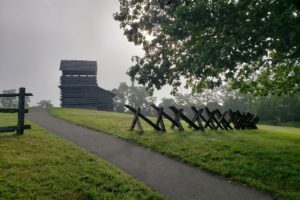 Photographs taken by individuals are often hard to identify, since they haven’t been seen on the Internet in any form. The last Mystery Photo was like that, taken by Holly Moore of Suwanee when on a recent trip. And somewhat expected, the photo, while beautiful, was most difficult, was identified by two GwinnettForum regular spotters, George Graf of Palmyra, Va., and Allan Peel of San Antonio, Tex.
Photographs taken by individuals are often hard to identify, since they haven’t been seen on the Internet in any form. The last Mystery Photo was like that, taken by Holly Moore of Suwanee when on a recent trip. And somewhat expected, the photo, while beautiful, was most difficult, was identified by two GwinnettForum regular spotters, George Graf of Palmyra, Va., and Allan Peel of San Antonio, Tex.
Peel wrote: “Today’s mystery photo is a picture of the Groundhog Mountain Lookout Tower at Mile post 188.8 along the Blue Ridge Parkway approximately five-miles south of Laurel Fork, Va. This site includes the old Groundhog Hill Cemetery.
“The observation tower was made of wooden logs and originally erected by the Virginia State Forest Service in 1942. It was used to view mountain ranges and look for hazards or fires. The tower is accessible for visitors willing to climb its steps for a spectacular view of Buffalo Mountain, Rich Hill, and the plateau of gentle hills that make up the Carolina Piedmont in North Carolina. As can be seen in the mystery photo, the site includes an exhibit of the various types of wooden fences used by the early settlers of the region.These fence displays were first constructed in 1939, by the Civilian Public Service Enrollees and have been maintained ever since.”
GwinnettForum is provided to you at no charge every Tuesday and Friday.
Meet our team
- Editor and publisher: Elliott Brack, 770-840-1003
- Managing editor: Betsy Brack
- Roving photographer: Frank Sharp
- Contributing columnist: Jack Bernard
More
- Mailing address: P.O. Box 1365, Norcross, Ga. 30091
- Work with us: If you would like to learn about how to be an underwriter to support the publication of GwinnettForum as a community resource for news and commentary, please contact us today.
Subscriptions to GwinnettForum are free.
- Click to subscribe.
- Unsubscribe. We hope you’ll keep receiving the great news and information from GwinnettForum, but if you need to unsubscribe, go to this page and unsubscribe in the appropriate box.
© 2022, Gwinnett Forum.com. Gwinnett Forum is an online community commentary for exploring pragmatic and sensible social, political and economic approaches to improve life in Gwinnett County, Ga. USA.


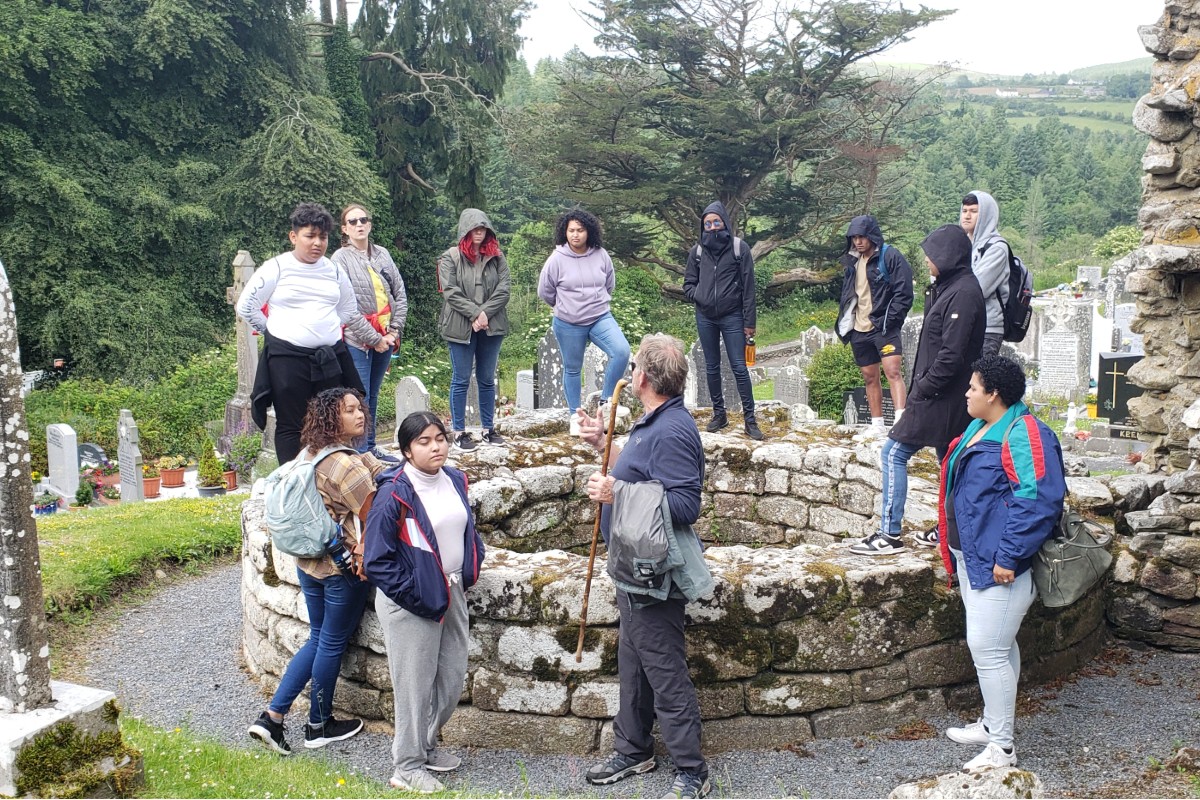


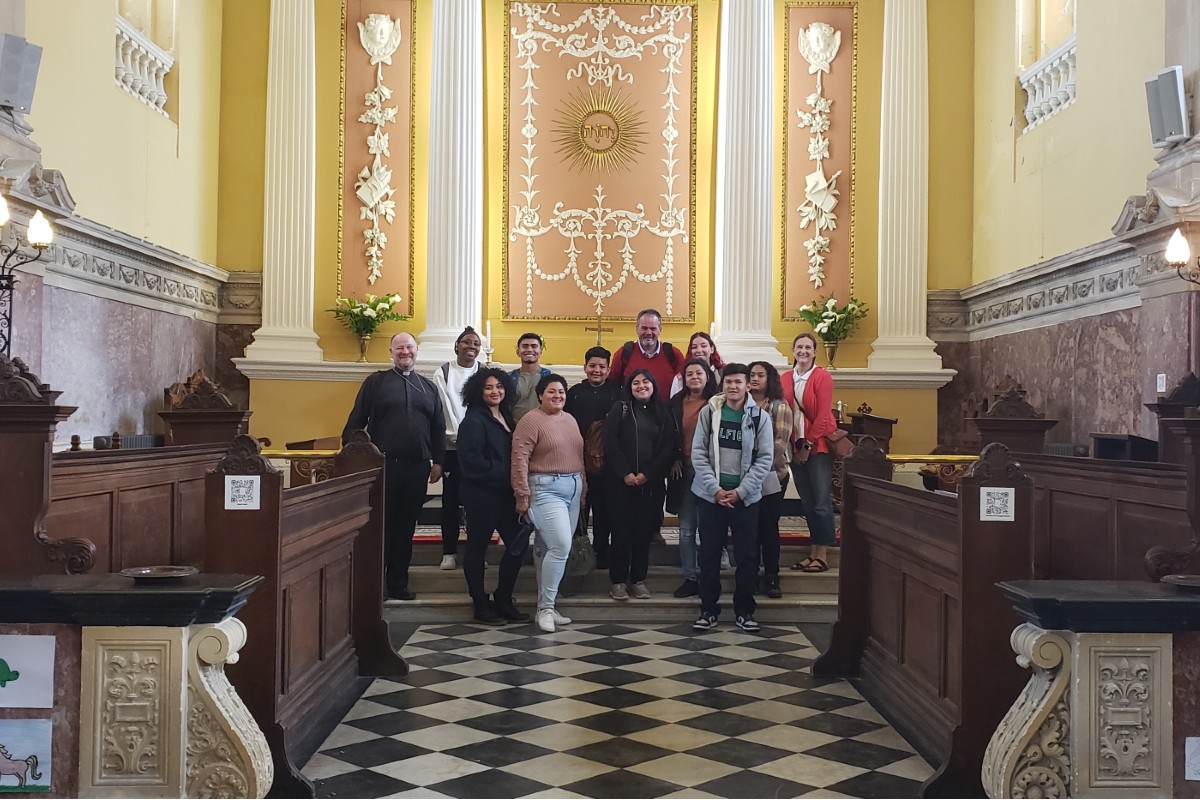

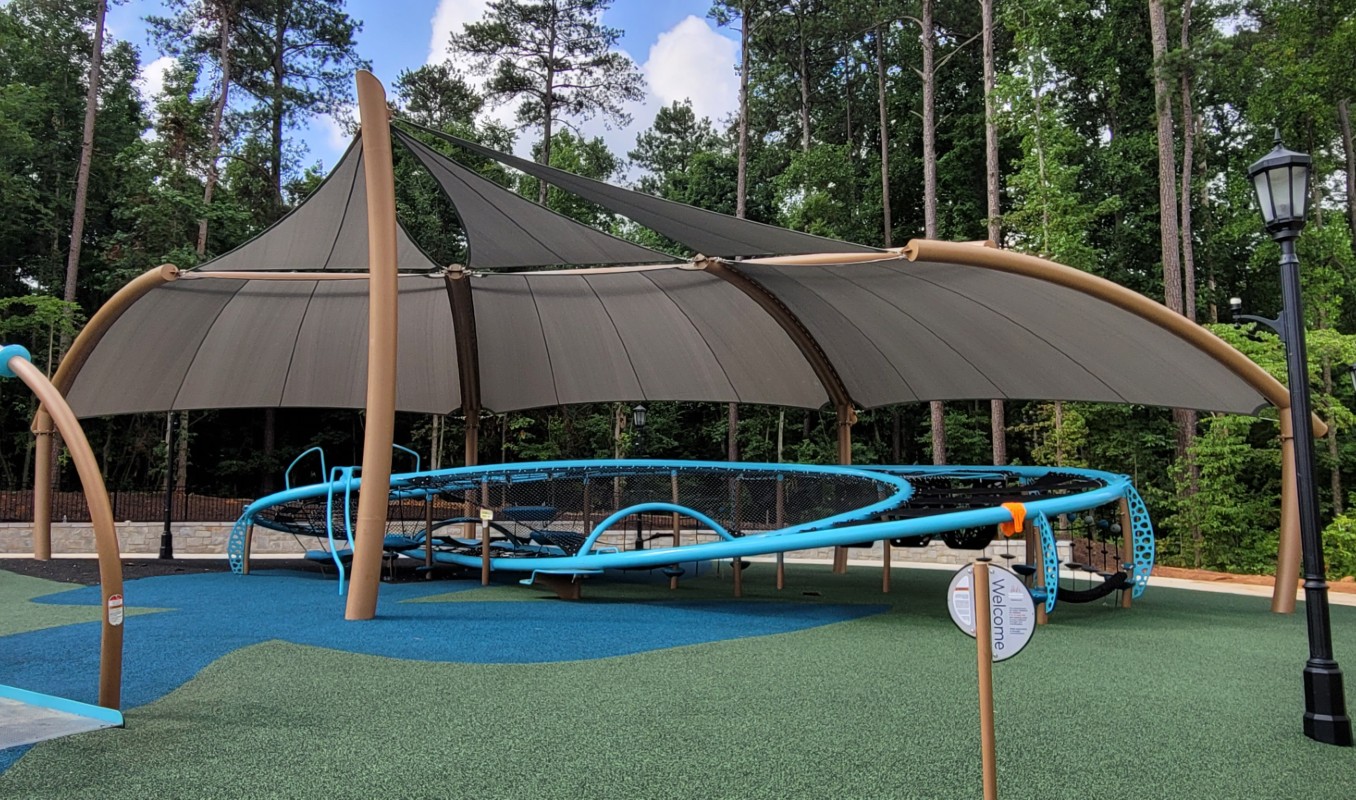








Follow Us